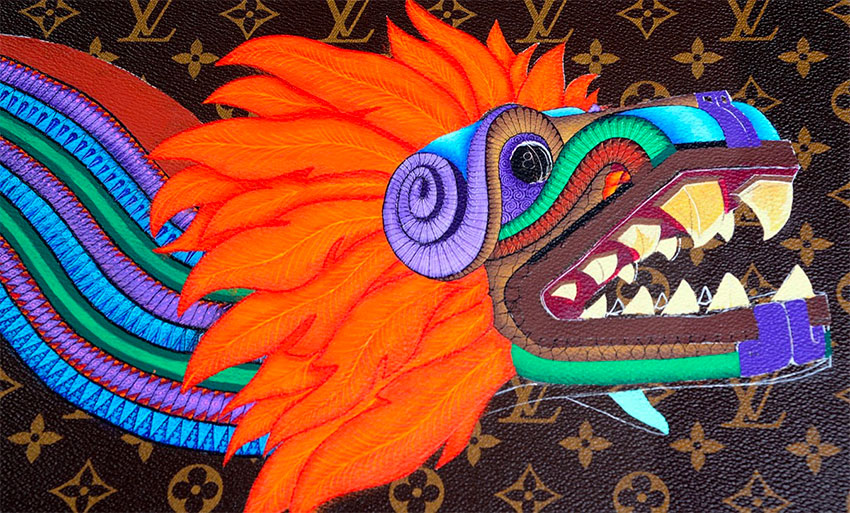A French design house is continuing to collaborate with Mexican artisans, connecting them with customers.
Louis Vuitton has connected artisans in Oaxaca with buyers who commissioned them to paint their traditional Zapotec designs on Vuitton hard-sided trunks.
The result is “Power Animals,” a series of Vuitton trunks featuring painted animals inspired by the Zapotec calendar.
Like French fashion designer Isabel Marant, who recently apologized for incorporating indigenous designs into her newest clothing collection, the legendary design house has also had to deal with accusations by Mexico of cultural appropriation.
Louis Vuitton himself was questioned in July 2019 by the Ministry of Culture when embroidery on chairs by the designer bore a resemblance to patterns from Tenango de Doria, Hidalgo. The ministry wanted to know if the company had an arrangement with artisans there, and although Vuitton stated that that was the case, the chairs were taken off the market anyway.

In 2020, the designer has tried to revamp its relationship with Mexican indigenous creators, choosing instead to give credit to the artisans. “Power Animals” is putting artisans in direct contact with clients the company has solicited for them.
In February, the designer unveiled a collection entitled The Colorful Journey LV, which included six Vuitton travel trunks with different artisan designs, painted by the small workshop Taller Casa Don Juan in the community of San Martín Tilcajete and displayed during the Zona Maco art and design event this year in Mexico City.
Vuitton engaged the painters to illustrate likenesses of the state’s signature animal figurines, often called Oaxacan alebrijes.
Whereas the February event was a static exhibit, the newest trunks were created in real time in front of Vuitton customers, who the company brought as a group to the same Oaxacan workshop featured in the February exhibit. At the latest event, Vuitton clients met the artisans who painted their trunks and were able to communicate with them about the nature of the painting.
“In keeping with fair trade practices and out of respect for the art and its creators, the client and the master artisan have an open dialogue about the creation process,” the designer explained to potential clients on its website.
The event was done in accordance with Mexican copyright law and the Law for Safeguarding Knowledge, Identity and Culture of Indigenous Communities, the company said.
Vuitton sells the trunks to its clients but does not see any money from the artisan’s work: the clients paid the artisans directly at the event.
The fanciful paintings included coyotes, geckos, turtles, armadillos, rabbits, butterflies, hummingbirds, and several other animals. The company plans to highlight more of the artisans’ works soon at the Louis Vuitton store in the Palacio de Hierro mall in Mexico City, it said.
Source: Life and Style (sp)
